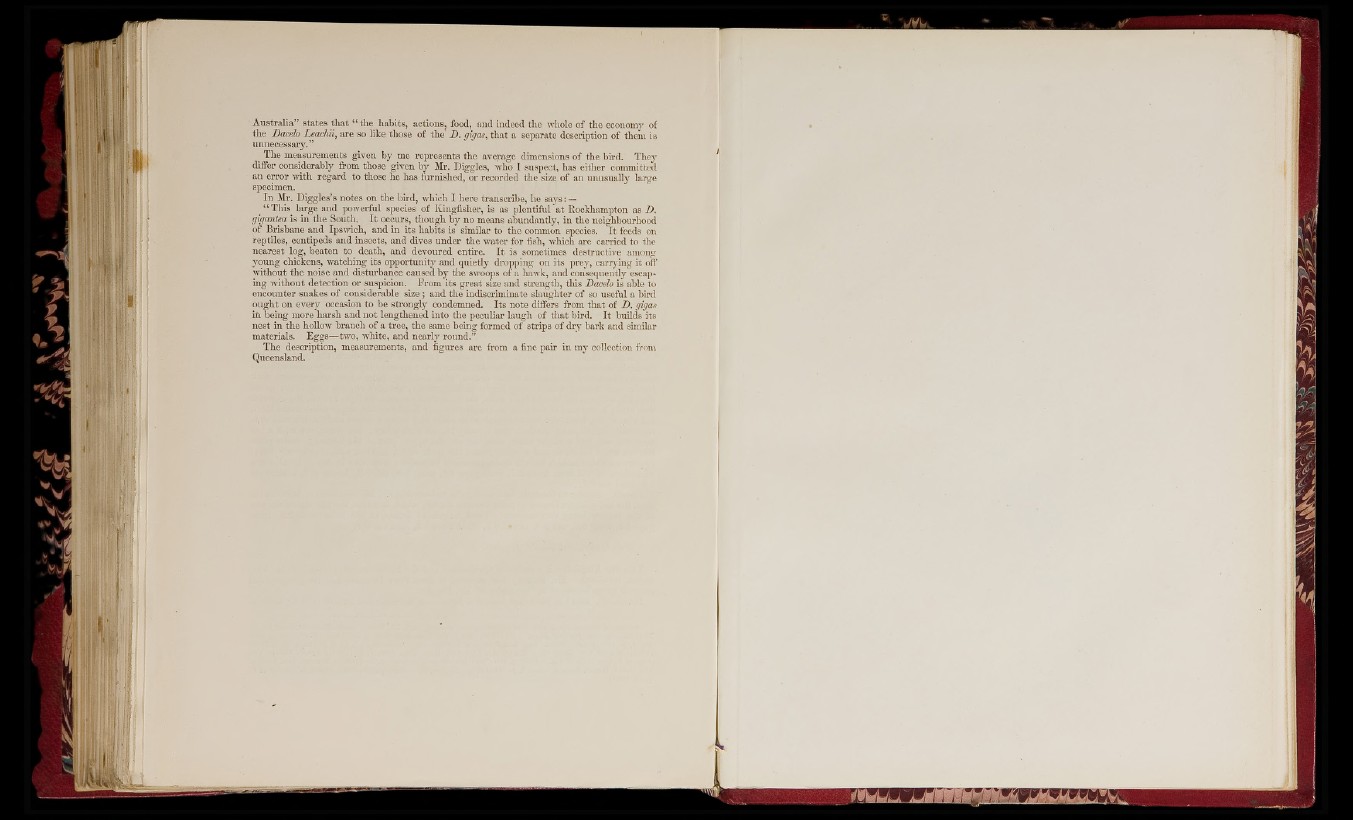
A u s tra lia ” sta te s th a t “ the habits, actions, food, nnd indeed th e Avhole o f the economy of
th e Dacelo Leachii, a re so like those o f th e D. gigas, th a t a separate description o f them is
unnec essary.”
_ T h e mepuremenfcs g iven by me rep resen ts the average dimensions o f the bird. They
differ considerably from those given b y Mr. Diggles, who 1 suspect, has either committed
a n e rro r vrith reg a rd to tliose h e has furnished, or recorded th e size o f an unusually large
specimen.
I n Mr. Diggles’s notes on th e b ftd, which I h ere transcribe, h e says: —
_ “ Tliis large and powerful species o f Kingfisher, is as plen tifu l a t Rockhampton as D.
gigantea is in the South. I t occurs, tliough b y no means abundantly, in the neighbourhood
o f Brisbane an d Ipswich, and in its h abits is similar to th e common species. I t feeds on
reptile s, centipeds and insects, an d dives u n d e r th e w ater for fish, whicli a re carried to the
n e a re s t log, be aten to death, and devoured entire. I t is sometimes d e struc tive among
y o u n g chickens, watching its o p p ortunity and q u ietly dropping on its prej-, carrjdng i t off
ivithout the noise and d is tu rb p c e caused b y the sivoops o f a haivk, aud consequently escapin
g w ith o u t d etec tion o r suspicion. From its g re a t size and stren g th , this Dacelo is able to
encounte r snakes o f considerable size ; and th e indiscriminate slau g h ter o f so useful a bird
o u g h t on every occasion to be stro n g ly condemned. . I ts note differs from th a t o f D . gigas
in b eing more h a rsh and n o t lengthened into the peculijir lau g h o f th a t bird. I t builds its
n e s t in th e hollow b ran ch o f a tre e, th e same being formed o f strip s o f d ry bark and similar
materials. Eg g s— two, white, an d n early rou n d .”
T h e description, measurements, and figures a re from a fine pair in my collection from
Queensland.